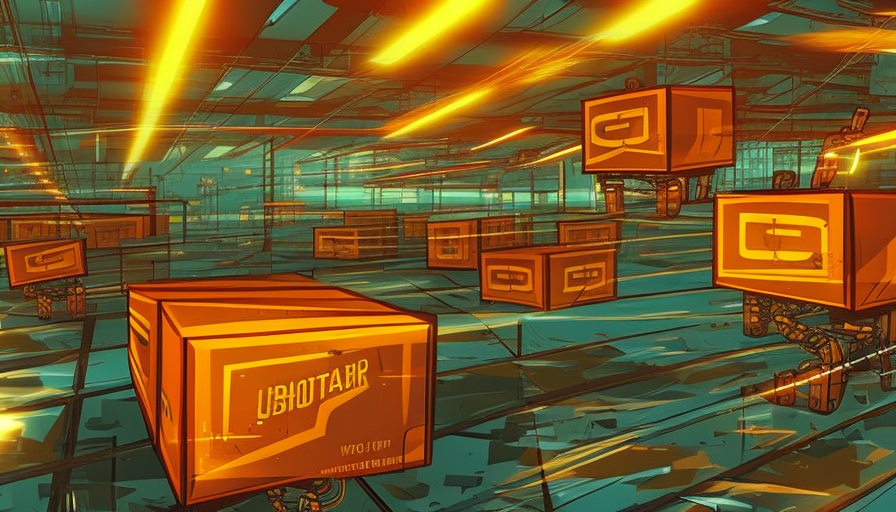May 20th, 2021 | 5 min read

Are you seeing success in your eCommerce business but need help scaling and automating dropship operations? Wondering how to automate dropshipping? From a lack of visibility to the use of manual processes, dropship order management can become overwhelming.
If you’re an eCommerce operations manager looking to scale your business, we’ve got you covered. Let’s dive into the 5 key elements for scaling and automating your dropship operations.
Anyone in charge of dropship order management knows one thing: manual order processing simply does not scale. Between scaling issues, human errors, and delays, manual order processing inevitably leads to a bad customer experience. That’s why automation is an absolute necessity for scaling your dropship operational system and order processing.
What if your vendors could see orders in real-time instead of at the end of the day when you had the time to email them over? What if you didn’t have to stress about missing a sales order? Automatic FTP, for example, allows for the automation of mundane and tedious tasks, so you can focus on what matters: growing your business and keeping your customers satisfied.
A complete dropship automation system should be able to pull off a few functions, including:
What if we told you that automated order routing doesn’t only benefit your dropshipping operations but your vendors too? Manual order processing makes vendors less likely to work with you, as they will also have to operate on a slow, manual basis. Instead, creating a flexible automated system for your vendors will make you easier to work with and result in a better relationship. This means your vendors prioritize you and your mutual customers by fulfilling orders and replacing items faster.
Overall, the money your business saves with automated dropshipping gives you the ability to scale your business quickly, reinvesting profits right back into your business and nurturing growth. The best part? Automated order routing eliminates human error, delays, and vendor disagreements, ensuring you provide your customers with the best experience possible.
Duoplane can automate sending POs, inventory syncing, & shipment feeds. Get in touch with us to start your free trial!

It goes without saying that maintaining visibility into all aspects of your business is paramount when trying to hold on to any level of success. One of the aspects of the dropshipping model that takes more work to nail down is visibility.
Because so much of your business is outside your direct control, it is hard to know exactly what is happening and when. For instance, without order and inventory visibility, it would almost be impossible for a retailer to see where a customer’s order is. The real challenge, however, is providing a good customer experience without direct control over the entire process. Let’s focus on how to accomplish this in three prominent aspects of your ecommerce operations:
In today’s world, customers have come to expect complete order visibility: “When will my package ship?” “What’s my tracking number?” This is particularly relevant for dropshipping retailers, as a large portion of the order process is out of your direct control.
As orders are fulfilled by third-party vendors, it can be challenging to ensure order visibility insights. At the most basic level: you can’t simply look into your warehouse management system to track the process of an order.
Furthermore, visibility is especially vital in the case of expecting. For example, if a customer cancels their order, you need to know whether it is possible to eliminate vendor-retailer back-and-forth and corresponding delays. Late orders, changes, and cancellations must be monitored and handled ASAP to ensure a positive customer experience.
Because you are dealing with shared inventory when dropshipping, you must know what is in and out of stock. That way, you can keep your catalog up-to-date and set reasonable customer expectations regarding backorders. This better business practice sets you up to avoid cancellations and provide a better customer experience.
Selling out-of-stock items is equally expensive as it is time-consuming, so your dropshipping automation system should be able to read and retrieve current inventory from your vendors and sync it to your catalog.
Lastly, vendor performance is important in terms of visibility. A strong feedback loop can be integral in knowing which products and vendors are working well for you. Quickly ask yourself: Do orders typically take two days or two weeks to ship? How easy is it to get a hold of my vendors?
If any of your answers were less than ideal, the good thing is that multiple vendors sell the same products. Our advice is to pick the vendor that prioritizes your business. Because you will be investing in marketing efforts for your vendor’s products and you both share a mutual customer, picking the right vendor is essential to ensure a positive customer experience.
Tools like the vendor scorecard can be of great assistance in monitoring vendor and product performance. If you’re looking for tips on how to find the right vendors for your dropshipping business, check out our free-to-download vendor scorecard.
Because every vendor is different, you can’t expect them to alter their processes for every individual retailer with which they work. Rather, they prefer every retailer to conform to the way they do business. And while they don’t necessarily ‘expect’ this, it doesn’t hurt to sweeten the deal by being flexible. And in turn, your relationship is likely to get a lot stronger, which will streamline your operations and improve your mutual customer’s experience.
Here are a couple of ways that you can provide a flexible system for your vendors:
If possible, have the orders automatically populate the vendor’s own order management systems so they do not have to do any additional or manual work. Similarly, directly integrating with the vendor’s back-end systems saves them a lot of time and effort.
Some vendors might send tracking in an Excel file; others might have automated email alerts. Similarly, some inventory communication may be sent via email, while others may need to be pulled from an FTP server. Your system needs to be able to consume all forms of information and adapt to vendors’ various needs.
Overall, as your business grows and you build on more vendors, your system needs to be more and more flexible. For instance, you cannot email vendors with a CSV file for each order. You need to create an adaptable system that allows you to streamline the order and distribution process across all of your vendors.
Because most ecommerce stores are not on par with the giants like Amazon or Walmart, they don’t have the ability to dictate the terms of a vendor-business owner relationship. Instead, you’ll want to create strong, mutually beneficial arrangements where you and your vendor find yourselves on the same side of the table, working to help your mutual customers.
As you know, if you want your customers to have a good experience, you need a good relationship with the people supplying the products. This is easy to envision when things are running smoothly, but these relationships are put to the test when orders are canceled, and refunds are due. In these instances, you want your vendors to be as responsive and transparent as possible.
Overall, it is important to understand that dropshipping does add an extra burden to vendors. By doing what you can to be easier to work with, vendors will reciprocate with more favorable treatment. In turn, enhancing customer experience.
Dropshipping is an undoubtedly clean and simple way to operate an eCommerce business with no physical inventory. But what happens when there are problems with the orders themselves? What happens when products are returned?
The pain of returns is something many retailers do not realize, but, luckily, there are a few options that make the return process more manageable.
Even if vendors charge a restocking fee, it may be worth it to avoid further hassle. Additionally, should they agree to accept returns, make sure you have a dependable system in place so that you’re properly credited or refunded by your vendors.
While this can result in a pretty cluttered work space, garage, or storage unit, sometimes it is the most cost-effective option to just keep the returns yourself.
From there, you have the option to store and reship these products as a part of future orders. You could either have them pay you for the products, or you could opt to resell them on a consignment basis. Some examples of third parties that accept returns are Returnly and Return Magic.
Beyond these aspects of dropship order management and returns specifically, there are a few other things you’ll want to keep in mind to preserve that spirit of dropship automation and strong relationships with vendors and customers alike.
First, customers are naturally going to want a consistent return policy despite vendors varying policies. Second, keeping track of the products returned most often allows you to either correct any misinformation that might be causing said returns or simply remove them from your catalog altogether.
We’ve been the industry-leading solution to automate dropshipping operations for over 12 years. Check out our reviews page to learn why our clients love us.

This post was last updated on Aug 17, 2023.
Automated order routing in dropshipping refers to the process where orders from customers are automatically forwarded or routed to the respective suppliers without manual intervention. This streamlined system ensures that once a customer places an order on a retailer’s website, the order details are sent directly to the dropship supplier responsible for fulfilling that product. By automating this step, retailers can save significant time, reduce errors associated with manual order entry, and speed up the overall order processing time. This ultimately results in faster deliveries and happier customers.
Yes, a Shopify store can be fully automated using a combination of built-in tools, third-party applications, and integrations. Shopify offers a robust ecosystem of apps and integrations designed to automate various tasks such as order processing, inventory management, marketing campaigns, customer communications, and more. From automated email marketing solutions like Klaviyo to inventory and order management tools like Duoplane, there are numerous options available for merchants looking to automate their processes. However, while many tasks can be automated, it’s essential for store owners to still monitor and oversee their operations to ensure everything runs smoothly and maintain a high level of customer service.
Duoplane is a dropshipping automation software built by dropshippers, for dropshippers. We’re here to help you streamline your ecommerce retail fulfillment operations and automate order routing, inventory syncing, shipment feeds, and more.
Don’t just take our word for it – check out our reviews and case studies to learn why we’ve been the industry-leading solution for over 12 years, assisting over 300 retailers in onboarding over 2000 vendors and 3PL warehouses.
Experience the best dropshipping automation software risk-free with our 14-day free trial. Our dedicated onboarding specialists will guide you through the setup process, ensuring you’re ready to hit the ground running.
IF YOU DROP SHIP,
THEN YOU’LL LOVE DUOPLANE.
Duoplane intelligently and automatically routes orders to the right vendor or warehouse.
Keep everyone on the same page and save time by allowing vendors to manage their orders.
Automate vendor inventory feeds to keep your product catalog accurate.
Stay on top of your books by connecting with your accounting system to sync vendor invoices.
Streamline your operations and centralize orders from all of your e-commerce channels
Manage the full order cycle, including changes, shipments, returns, and order exceptions.
Duoplane connects to your existing systems to minimize manual effort by you or your team.
Provide feedback to vendors using actionable performance metrics.
Curious what Duoplane can do? See for yourself with a free trial.
Get in touch with us today!